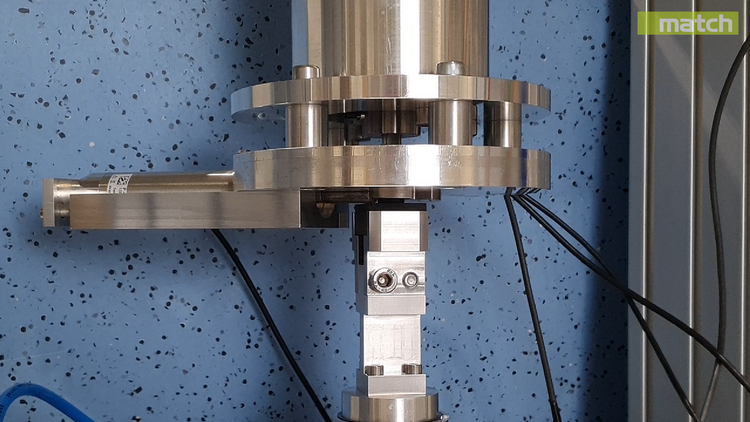Strategies for piezo actuator-assisted disassembly of bolted joints

| E-Mail: | bluemel@match.uni-hannover.de |
| Team: | Richard Blümel |
| Year: | 2023 |
| Date: | 15-01-23 |
| Funding: | DFG |
| Duration: | 2,5 Years |
Motivation
Sustainability and resource conservation are becoming increasingly important in consideration of product life cycles. At the end of the utilization phase, questions of recycling, material recovery or regeneration often arise. An essential aspect is the ability to disassemble components in order to separate them from each other easily and cost-efficiently in order to prepare the subsequent process optimally. In subproject A5 of SFB 871, the Institute of Assembly Technology (match) researched methods and strategies for controlled and damage-free disassembly using the example of turbine blades used in aircraft engines. The high temperatures and the particles in the air stream, such as kerosene, combustion residues, or sucked-in sand, create a corrosion layer that causes the blades to solidify in the turbine disks. Using vibrations superimposed on the disassembly movement generated by a piezo stack actuator, it becomes possible to reduce process forces.
Research Agenda
The main objective of the planned transfer project is the implementation and exemplary application of the method developed at the match for minimizing disassembly forces while maximizing component protection under real-life conditions in the disassembly of aircraft turbines at MTU Maintenance Hannover GmbH. The disassembly of bolted joints of the main engine modules serves as an application case. These solidify during operation, leading to high disassembly forces, especially in the area of the combustion chamber and high-pressure turbine module. As a result, the high torques cause damage to the bolts, thread inserts, or base threads during disassembly. Conventional removal, e.g., by drilling out and recutting the thread, is not an option in many cases, as this is prohibited by the manufacturer or is only possible under strict conditions and with significantly increased repair costs. The minimization of the loosening torque is made possible by multivariate vibrations (e.g. vibration direction, amplitude, frequency), which are superimposed on the loosening movement. The developed method will be applied to develop a functional hand-guided disassembly tool. In close collaboration with MTU, this tool will be enabled for industrial use in the regeneration of aircraft turbines.























